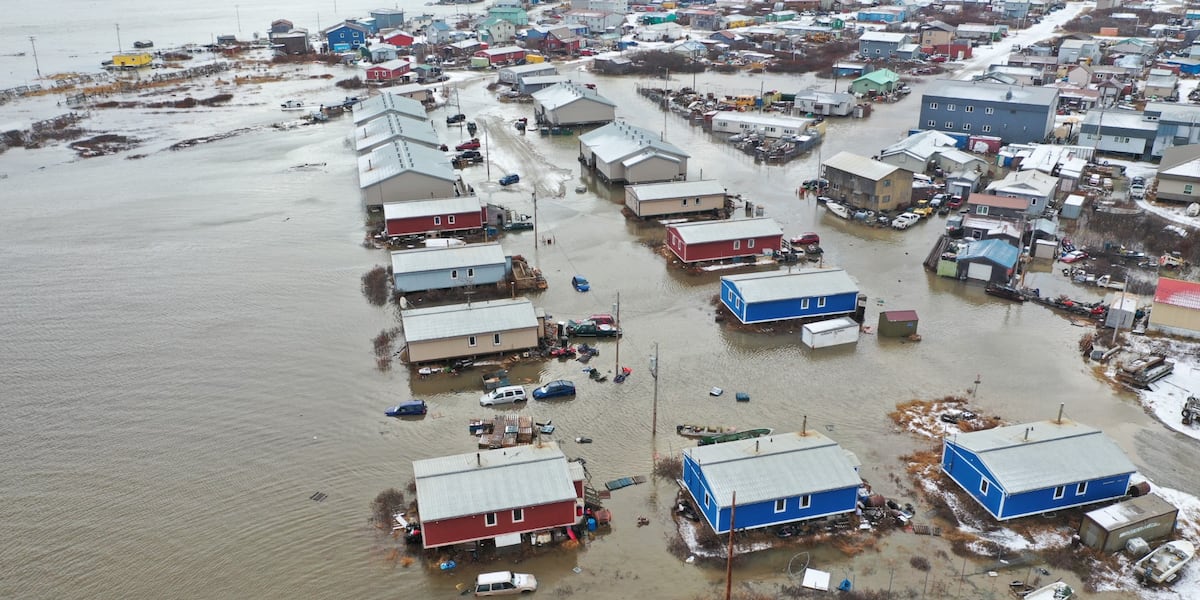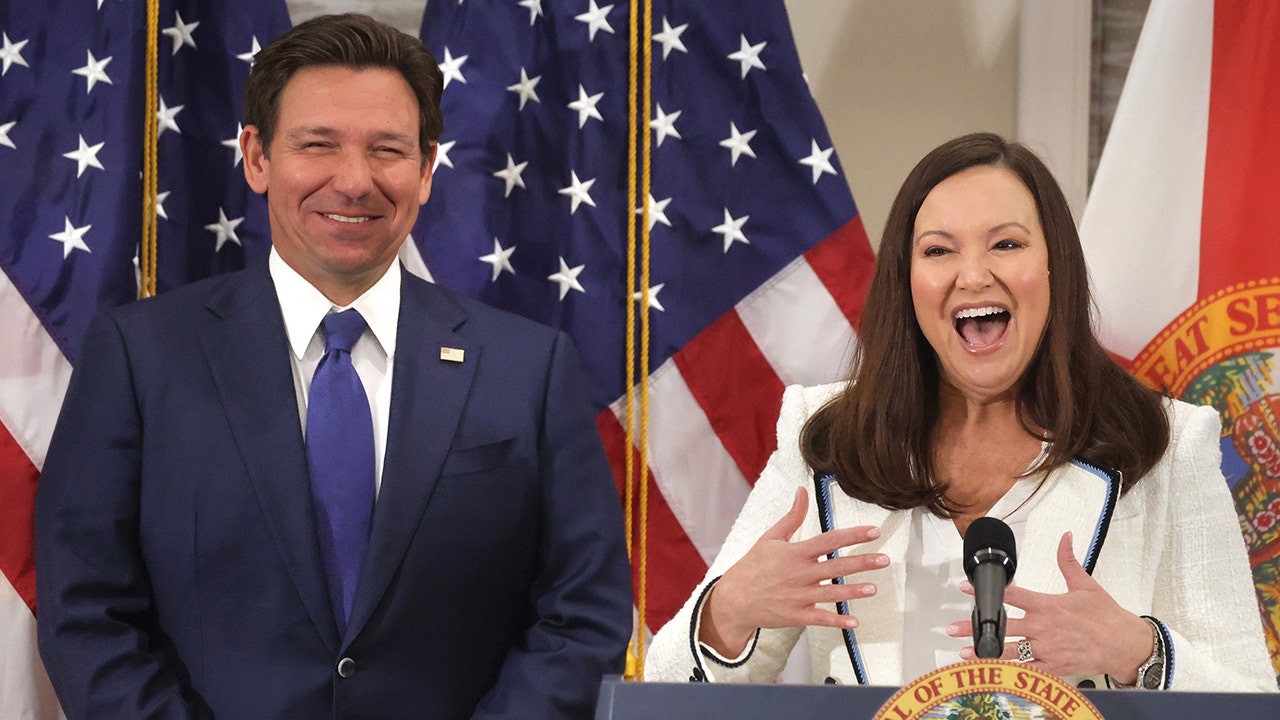In the wake of Gov. Mike Dunleavy’s veto of more than $87 million in one-time K-12 education funding, some Alaska lawmakers are pushing for a special legislative session to restore the appropriation to the budget.
But the threshold to override Dunleavy’s vetoes is high: It takes three-quarters of lawmakers, or 45 out of 60, to undo the governor’s action, and even lawmakers calling for a special session say reaching that threshold will be difficult.
Leaders of the bipartisan Senate majority and the Democrat-dominated House minority say their caucuses broadly support calling a special legislative session to reinstate $87 million in state funding that educators say is critical. But many members of the GOP-dominated House majority remain aligned with the Republican governor — likely enough to overcome attempts to undo Dunleavy’s vetoes.
Lawmakers earlier this year overwhelmingly approved a one-time $175 million funding boost for public K-12 education, in an effort to meet the needs of districts across the state that faced budget crises stemming from the end of federal coronavirus relief dollars, coupled with a lack of significant funding increase from the state since 2015. The one-time funding measure was largely seen as a compromise; many lawmakers supported a larger, permanent change to the state’s annual education appropriation process, but settled on smaller, temporary spending as a stopgap measure.
Dunleavy, a former public school teacher, principal, superintendent and school board member, did not take questions when he announced the $87 million veto Monday — which cut the Legislature’s one-time education funding package in half. Dunleavy has long sought cuts to spending on state services, even as education advocates and administrators from across the state have said the lack of increased state spending on education could have lasting, detrimental effects on Alaska’s public schools.
Senate President Gary Stevens, a Kodiak Republican, said Wednesday he supports the effort to override the governor’s veto of education funding, but that it was unlikely enough House members would agree.
“Unfortunately, I don’t believe the House is going to be able to get the number of the votes that will put us over the edge,” said Stevens. “So we’re doing what we can, but the Senate has only 20 members, compared to the House, which has 40 members. The Senate does not have equal standing in that.”
House Speaker Cathy Tilton, a Wasilla Republican, did not respond to several phone calls and messages seeking comment on the vetoes this week. In a Monday statement, she expressed support for the governor’s vetoes.
If 15 members of the Senate support the override vote, it would take 30 House members to reach the needed three-quarters threshold. House Minority Leader Calvin Schrage, an Anchorage independent, said his 16-member caucus supports holding a special session to vote on an override, meaning 14 majority members would have to support a veto override to reach the minimum threshold.
[Alaska education board to seek public input on barring transgender girls from girls’ sports]
For lawmakers to go into a special session, two-thirds of lawmakers must support it — a lower threshold than what is needed for a veto override, but still a tall order. Schrage said he had reached out to Tilton to request that she poll the House on whether members wanted a special session, and hadn’t received an answer to his request as of Wednesday afternoon.
At least one House majority member supports a special session. Bethel Democratic Rep. CJ McCormick, one of two Democrats in the House majority, wrote on Twitter that he is “100% calling for an override.”
“Talk to educators, talk to parents. Our schools and students are not being adequately funded,” McCormick wrote, calling the governor’s vetoes “disturbing.”
In a text message later, McCormick said it is “unclear” whether enough House majority members would support a special session, but that he thinks “it would be the right thing to do.”
Soldotna Republican Rep. Justin Ruffridge said he doubted enough House majority members would support a special session, but if the question came before the House, he would likely support reinstating the education appropriation.
“If we ended up in a place, and education funding was back before us and there was an option to fund education the way that we had it in the budget, yeah, I would vote for that,” said Ruffridge.
Ruffridge said Clayton Holland, superintendent of the Kenai Peninsula Borough School District, told him the district would instate a hiring freeze “until they understand what the full ramifications of this are” with “probably more changes to come.”
Ruffridge said he’s already heard from several constituents who oppose the governor’s education veto. He said he hasn’t yet heard from any constituents who support the veto.
Wasilla Republican Rep. Jesse Sumner said Tuesday that though he opposed Dunleavy’s veto of school funding, he would not support an override vote.
“I’ve always wanted the school funding at $680, so I’m less than happy about that,” said Sumner. The $175 million one-time funding boost approved by the Legislature translates to a $680 increase to the Base Student Allocation — the formula used by the state to allocate per-student funding to districts. The governor’s cut dropped the equivalent figure to a $340 formula boost.
“I don’t think I would override the governor’s veto, not because I don’t think there should be more school funding, I just don’t think that — given that it’s never been done before in the history of the state — I don’t know that this budget is so bad that it would justify it,” Sumner said.
For some House Republicans, Sumner said, voting against the governor would be “a nonstarter.”
“I could think of probably 18-16 people off the top of my head that aren’t going to override the governor’s vetoes,” he said.
Rep. Ben Carpenter, a Nikiski Republican, wrote in an email that he is “thankful” for the governor’s vetoes and that “our state bureaucracy’s results do not justify the cost, nor the increase in spending over the past five years.”
His view is one often repeated by backers of cuts to state spending: that a public service providing inadequate results should not be rewarded with more funds. Educators in the state are quick to acknowledge that Alaska students have for several years performed at the bottom of the nation in math and reading assessments. But they say that the way that should be addressed is with a greater investment in public education that can allow districts to improve student performance, including by recruiting and keeping better teachers.
“I’m content during the interim to say we need to continue to fund education during inflationary times, but we also need to continue to take a hard look at, ‘are we spending our money wisely?’” said Ruffridge. “Sometimes, people look at that funding mechanism as the only lever.”
Rep. Will Stapp, a Fairbanks Republican, said that he wouldn’t vote to override the governor’s veto because the Fairbanks North Star Borough could raise its local contribution to make up for the lower state funding. But the vast majority of Alaska communities don’t have that option, because they already provide the maximum allowed local funding contribution for education.
Sen. Bill Wielechowski, an Anchorage Democrat, said that as districts begin to communicate about the potential impacts of the governor’s veto — including possible cuts to teacher positions or programming — lawmakers will become more open to a possible vote to override the veto.
[Alaska to launch $5 million state-run reading academy amid skepticism]
“My expectation is, you’re going to hear now from school districts, ‘all right, here’s the ramifications, and guess what — it’s going to happen in two months.’ I think that is probably going to shock some people in the Legislature and maybe it does cause some people to want to go to a veto override very quickly,” said Wielechowski.
Mat-Su Schools Superintendent Randy Trani said Wednesday that a fellow district administrator was meeting that day with a group of lawmakers from the area to speak with them about the impacts of the vetoes.
“We don’t anticipate needing to cut any services next year. It’s the following year that’s very problematic for us,” said Trani.
Unlike in many districts across Alaska, the number of students in the Mat-Su district is expected to grow next year and in years to follow. That means that even with small funding increases from the state, the amount of real funding available per student continues to decline, and that translates to impacts like teacher wages that don’t keep up with inflation or insufficient student transportation services.
“It’s a hidden cut, every time this happens,” said Trani.
Lisa Parady, executive director of the Alaska Council of School Administrators, called the veto “insurmountable” and said Dunleavy “has clearly abdicated his constitutional duty to public education.”
“This veto has everything to do with his long-held demonstrated view that public schools are secondary. The question the governor should ask is not ‘can you continue to do more with less,’ but rather, ‘is the state providing the resources necessary to do the job we are asking teachers and schools to do, to do the job the constitution requires.’ The unequivocally clear answer is no,” Parady wrote in a statement.
Lon Garrison, executive director of the Association of Alaska School Boards, said in a statement that it was “incomprehensible to think that a former educator and school administrator would be willing to jeopardize the future of Alaska’s youth and, frankly, his own agenda to make our state the best place to raise a family.”
School boards “are now tasked with the unenviable task of deciding which programs to cut, how many staff to lay-off, how many more children to pack into a classroom, which cherished extracurricular activity must be sacrificed, and how many more buckets to scrounge up to catch the rain from leaky roofs,” wrote Garrison.
Even if lawmakers don’t call a special session, they can take up a vote to override the veto in the first five days of their coming regular session — which is scheduled to begin in January.
“I think it’s highly unlikely that you don’t have some effort to override this veto,” said Wielechowski.

:quality(70)/cloudfront-us-east-1.images.arcpublishing.com/adn/CWSHVUDHUZE53OXTJ74UIYRHCM.jpg)





/cdn.vox-cdn.com/uploads/chorus_asset/file/25336775/STK051_TIKTOKBAN_CVirginia_D.jpg)















/cdn.vox-cdn.com/uploads/chorus_asset/file/25822586/STK169_ZUCKERBERG_MAGA_STKS491_CVIRGINIA_A.jpg)

/cdn.vox-cdn.com/uploads/chorus_asset/file/25821992/videoframe_720397.png)




/cdn.vox-cdn.com/uploads/chorus_asset/file/23935558/acastro_STK103__01.jpg)